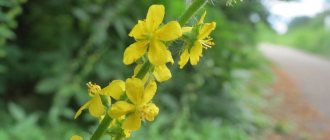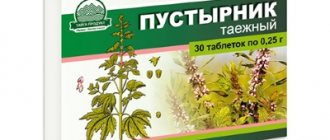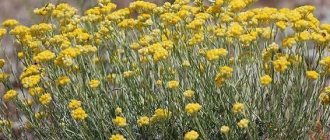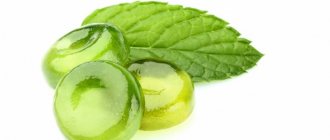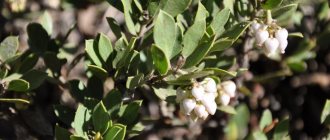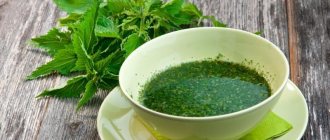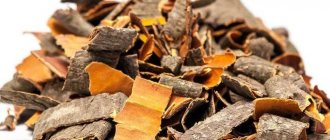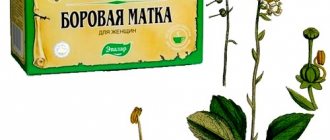The article was prepared by a specialist for informational purposes only. We urge you not to self-medicate. When the first symptoms appear, consult a doctor.
Red brush is a plant that has gained wide popularity in the folk treatment of gynecological diseases. Thanks to the content of phytohormones, red brush normalizes hormonal balance and successfully eliminates pathologies caused by dysfunctions of the endocrine system. The scope of application of the red brush is the treatment of hormonal imbalances in women and men, therapy of uterine fibroids, mastopathy, erosion, polycystic ovary syndrome, menstrual disorders (amenorrhea, dysmenorrhea, oligohypomenorrhea) and diseases of the genitourinary system.
Red brush and hormones
Age-related changes in the body can provoke a decrease in the production of sex hormones, which increases the load on other organs of the endocrine system - the thyroid gland and adrenal glands.
This can cause hormonal imbalance, which has many symptoms:
- Accelerated weight loss with good appetite;
- Sweating, increased body temperature, arrhythmia;
- Tremor or numbness in the limbs;
- Increased fatigue and drowsiness, or, conversely, insomnia;
- Rapid weight gain with a unchanged diet;
- Excess body hair (hypertrichosis) or baldness;
- Menstrual disorders: anovulation, amenorrhea, dysmenorrhea, oligohypomenorrhea and others;
- Deterioration of skin condition: itching, peeling, rashes, stretch marks;
- Disorders of the reproductive system: frigidity, impotence, infertility, etc.;
- Blood pressure surges, hypertension;
- Decreased visual acuity.
Hormone replacement therapy, which is often prescribed in such cases, can disrupt the natural production of hormones and make a person dependent on the drugs for the rest of their life. Phytohormones contained in plants are a good alternative to hormonal drugs and have fewer side effects. Red brush or Rhodiola cold is used to treat diseases of the reproductive system, internal secretion organs and heart pathologies. Its action is to normalize the natural production of estrogen and progesterone in case of imbalance caused by dysfunction of the endocrine glands.
Estrogen
Estrogen is a hormone that is produced in women and men, but in the male body its normal amount is minimal, and if produced in excess, it can cause cancer. Women produce more estrogen, as it is necessary for the normal functioning of the reproductive system.
This hormone regulates the development of the fetus during pregnancy and is involved in the formation of genital organs and bone tissue. Estrogen promotes the proper deposition of adipose tissue to create a feminine figure, reduces the accumulation of muscle mass, which women should normally have less than men.
In men, estrogen prevents apoptosis (programmed cell death) of sperm, which increases their ability to fertilize.
With a lack of estrogen, the following symptoms are observed:
- Sweating and attacks of headaches, sensations of heat and hot flashes often occur on the eve of menopause due to changes in the hormonal system;
- Reduced firmness and elasticity of the skin and the formation of wrinkles as a consequence;
- Vaginal dysbiosis.
Phytoestrogens from Rhodiola cold normalize estrogen levels and relieve menopausal symptoms - drowsiness, nervousness, insomnia and mood swings.
Progesterone
Progesterone in the female body is produced by the corpus luteum and adrenal glands, in men it is synthesized in the seminal vesicles. It is necessary for the regulation of the menstrual cycle and the course of pregnancy, promotes the proper development of the fetus, and prevents mastopathy and fibrous formations in the mammary glands. Under the influence of progesterone, the endometrium of the uterus is formed; with a reduced level of this hormone, a fertilized egg cannot implant, and the likelihood of miscarriage in the first trimester of pregnancy also increases. Progesterone regulates the functioning of the uterine muscles, blood rheology, the process of childbirth and lactation.
Symptoms of progesterone deficiency:
- Nervousness and irritability, mood swings, headaches are often observed before menstruation, when progesterone levels decrease;
- Pain in the mammary glands, swelling and neoplasms;
- Bleeding not associated with menstruation;
- Inability to conceive, infertility;
- Menstrual cycle disorders: amenorrhea, anovulatory cycle;
- Swelling of the face and limbs.
To normalize hormonal balance with low progesterone levels, take a cold infusion of Rhodiola in the second phase of the menstrual cycle. This restores the ability to conceive, ensures proper formation of the endometrium, removes symptoms of toxicosis and reduces the likelihood of miscarriage if pregnancy has already occurred.
Red brush for women
The red brush can be taken by women to normalize the menstrual cycle during anovulation, dysmenorrhea, as well as to eliminate the negative manifestations of menopause, such as sleep disturbance, nervousness, and hot flashes. Correcting hormonal levels with the help of a red brush allows you to restore the ability to conceive, prepare the uterus for the attachment of the embryo and the entire body for pregnancy.
Planning a pregnancy
The reproductive system of women is influenced by many factors related to both the external environment (ecological conditions, climate changes) and internal pathologies (hormonal imbalance, infectious diseases, neoplasms in the genital organs). With a complex negative impact, these factors can reduce the ability to conceive and create problems in family planning. The adaptogenic properties of red brush allow the body to better adapt to changing environmental conditions, and the immunomodulatory effect helps strengthen protective barriers and prevent diseases of systems and organs.
The red brush is an excellent prevention of benign formations, has anti-inflammatory properties and solves a number of problems associated with hormonal disorders in the female body. This plant is used in the form of infusions and decoctions, and as part of douching solutions, Rhodiola cold is an effective remedy against local inflammatory processes.
Ovulation
Lack of ovulation is a fairly common cause of female infertility, because without an egg, conception cannot occur. Anovulatory cycles can be similar to normal ones; menstruation also comes at the end of such a cycle, so it can be very difficult to suspect a lack of ovulation. Diagnosis is carried out using a basal temperature chart, rapid tests and ultrasound. A pathology is considered to be a situation in which anovulatory cycles become chronic, while one or two cycles per year without ovulation also occur in healthy women. Often, ovulation disorders are associated with improper maturation of the follicle.
Causes of ovulation disorders:
- Hormonal imbalance – low levels of estrogen or follicle-stimulating hormone, excess androgens;
- Diseases of the thyroid gland (hypothyroidism);
- Underdevelopment of the genital organs;
- Psycho-emotional shocks, chronic stress, exhaustion;
- Polycystic ovary syndrome, cysts, tumors and other gynecological diseases.
The red brush helps restore reproductive health if the reason for the lack of ovulation is hormonal imbalance, polycystic ovary syndrome due to excess follicle-stimulating hormone, inflammatory diseases of the genital organs and lack of estradiol, due to which the egg does not attach to the endometrium. The red brush helps restore the balance of estrogen and progesterone - hormones responsible for the maturation of follicles, the release of eggs from them and the further development of pregnancy in the event of fertilization.
Phytohormones of red brush, sage and boron uterus are an effective remedy for the treatment of infertility, as they help restore the menstrual cycle and stimulate ovulation.
But they must be taken in strictly defined phases of the cycle:
- The first phase of ovulation, which begins on the 6th day of the cycle immediately after menstruation, lasts about 10 days, during this period they drink sage and red brush;
- Ovulation occurs on days 16-18 of the cycle, at this time taking the red brush can be combined with the hog uterus;
- The second phase lasts from day 19 until the end of the cycle, you need to continue taking the red brush and hogweed;
A necessary condition for treatment with phytohormones is to determine the hormonal status, for which it is necessary to pass the appropriate tests. The dosage of drugs and an individual dosage regimen are prescribed by a herbalist.
Climax
Menopause is a period of decline in reproductive function and can be accompanied by a number of negative symptoms associated with hormonal changes in the body:
- High blood pressure, hypertension;
- Irregular cycle, lack of menstruation;
- Hot flashes, feeling hot and sweating;
- Headaches, nervous exhaustion;
- Sudden mood changes, irritability;
- Insomnia or drowsiness with increased fatigue.
These unpleasant manifestations of menopause can be smoothed out by restoring the concentration of estrogen in the blood.
Red brush phytohormones have an estrogen-like effect and reduce the intensity of the above symptoms, and also have a number of additional beneficial properties:
- Produce a detoxifying effect, cleansing the body of toxins;
- They prevent atherosclerosis and diseases of the cardiovascular system;
- Has an anti-inflammatory effect;
- Prevents neoplasms in the uterus and mammary glands.
Pregnancy
The red brush helps to normalize the body’s condition and prepare it for conception and pregnancy, but it is not recommended for pregnant women to use it.
Red brush for menstruation
The hemostatic properties of the red brush make it possible to use it when menstrual bleeding is too intense and heavy, but in other cases it is contraindicated to use it during menstruation.
Contraindications
Contraindications to the use of red brush preparations are:
- Heart failure;
- Pregnancy and lactation;
- High blood pressure;
- Stress, deep depression;
- Feverish state;
- Heart failure.
It is not recommended to use in combination with hormonal drugs and phytohormones, which include licorice, clover, oregano and hops. At the same time, in folk medicine there are recipes that show the simultaneous (phase) use of radiola quadruple with boron uterus and sage - phytohormonal plants. Before using these preparations or other red brush preparations, it is necessary to consult a specialist, and during the use of the preparations, careful adherence to the phases of administration, dosage regimen and doctor’s instructions, since even a slight overdose can provoke drowsiness, inhibited reactions, and allergic manifestations.
During therapy, drinks containing alcohol and fatty, hard-to-digest foods should be excluded from the diet.
Red brush in gynecology
Female infertility
Infertility is a common problem among modern women; a number of factors contribute to its occurrence:
- Hormonal imbalances associated with pathologies of the endocrine system, early menopause;
- Diseases of the genital area - infections, inflammatory processes, cervical erosion;
- Violation of the patency of the fallopian tubes;
- Pathologies of the internal mucous membrane of the uterus, endometriosis;
- Neoplasms of the uterus and appendages - cysts, polyps, fibroids;
- Hereditary pathologies.
The complex effect of red brush preparations on the female body allows you to eliminate common causes of infertility, strengthen the immune system, remove inflammation of the genitourinary system, prevent neoplasms and mastopathy.
Red brush decoction. Crushed Rhodiola four-cut root (1.5 tablespoons) is poured with hot water (350 ml) and boiled for ten minutes in a water bath. Infuse and strain, after 45 minutes add warm water so that the total volume of the finished decoction is 250 ml. Take half an hour before meals three times a day for a month. The broth is stored in the refrigerator for two days. It can be used for douching.
Ovarian cyst
Functional ovarian cyst is one of the most common neoplasms, the cause of which is hormonal imbalance. The cyst can go away on its own and form again with a new cycle. If an ultrasound shows the growth of a cyst, then it must be treated, otherwise it can provoke a number of disorders of the reproductive system and cause infertility.
Treatment of ovarian cysts with a red brush gives good results with long-term use of the drug. The course of treatment lasts several months, after each cycle there is a break of two months.
Red brush tincture for ovarian cysts. Grind cold Rhodiola root and pour in vodka or a forty-proof alcohol solution at the rate of 350 ml per glass. Infuse in a dark room for three weeks; it is advisable to use a darkened glass container for this. Take 30 drops of the product four times a day.
Douching solution. Half a teaspoon of red brush tincture is diluted in boiled warm water (400 ml) (you can purchase it at a pharmacy or make it yourself).
This remedy allows you to normalize your cycle and reduce pain during menstruation. Use no more than twice a year so as not to disturb the vaginal microflora.
Read more: ovarian cyst in women, causes, symptoms and treatment
Red brush for erosion
Symptoms of inflammatory processes in the reproductive organs are pathological discharge from the genital tract and damage to the uterine mucosa, which can subsequently cause infertility. In addition, frequent infections can cause cervical erosion. Rhodiola cold helps to cure it at an early stage and prevent hormonal disorders. Its composition is rich in glycosides, essential oils with an antiseptic effect, bioflavonoids and tannins, which provide an anti-inflammatory effect. To treat erosion, douching with a solution from a red brush is used.
Polycystic ovary syndrome
Polycystic ovaries are characterized by many benign neoplasms and ovulation disorders, which become chronic. In addition, women with polycystic disease are characterized by hormonal disorders: they have a decreased level of follicle-stimulating hormone, which makes it impossible to form full-fledged eggs, and there is also an excess of androgens with normal levels of estrogen and progesterone. The red brush brings androgen levels back to normal and is a prevention of follicular cysts.
The course of taking red brush for polycystic ovary syndrome is three weeks; it cannot be taken during menstruation.
Preparation of tincture: for 80 grams of crushed Rhodiola four-cut root, take half a liter of vodka or a forty-proof alcohol solution, place it in a container with a tight-fitting lid and leave for a week in a dark room without access to sunlight. Take half a teaspoon in the morning before meals. It is not recommended to take this medicine at night, as the tonic effect of the red brush may cause problems with sleep.
Cervical polyps
Polyps are benign formations of the uterus, caused by excessive thickening of the endometrium under the influence of excess estrogen. Other causes of polyps may be a depressed state of the immune system, thyroid dysfunction, adnexitis and endometritis.
When polyps grow excessively, they threaten reproductive function because they make it difficult for the egg to attach to the walls of the uterus.
Red brush affects such causes of polyposis as thyroid dysfunction, hormonal imbalance and decreased immunity, due to its composition rich in phytohormones and immunomodulatory effects.
Read more: causes, symptoms, treatment and methods for removing polyps in the uterus
Endometritis
It is believed that endometritis provokes inflammation, which occurs due to damage to the uterine mucosa. Considering that usually such damage does not pose a particular danger, medical scientists concluded: the development of the disease occurs only when the immune system is weakened and the patient does not observe the rules of personal hygiene, which is why pathogenic organisms enter the uterine cavity. In response to their proliferation, low-grade inflammation occurs.
Folk remedies with a red brush treat endometritis in several ways:
- Relieve pain syndrome;
- Strengthen the body's resistance by stimulating the production of interferons (immune proteins);
- Deliver microelements and vitamins to cells necessary for the synthesis of new cells and the launch of immune processes;
- Restore the balance of hormones responsible for the health of the genital organs;
- Accelerate blood flow for rapid delivery of necessary substances;
- Relieves inflammation and helps destroy bacteria.
Endometriosis
The endometrium is necessary for the proper formation of the inner surface of the uterus and nutrition of the embryo, and during menstruation it ensures the removal of an unfertilized egg. Uncontrolled proliferation of endometrial cells, which occurs with endometriosis, leads to the formation of polyps and prevents the egg from attaching to the walls of the uterus.
Treatment of endometriosis consists of eliminating the main cause of the disease – low levels of progesterone. Modern hormonal therapy carries risks for the patient, since it is difficult to calculate the correct dose of hormones, in addition, the gonads may stop producing their own hormones.
For endometriosis, especially in the first stages of the disease, it is much more effective to use herbal medicine based on red brush, which has the property of regulating hormonal balance thanks to phytoestrogens contained in the roots of this plant. Phytohormones act much more mildly and are not recognized by the body as its own hormones, so the functioning of the sex glands is not suppressed, but, on the contrary, is restored.
Thanks to red brush therapy, adhesions are resolved, foci of endometriosis are eliminated and hormonal balance is maintained, which prevents relapse of the disease.
Chemical composition
If you “disassemble” a medicinal plant into its elements, you will find many valuable components: not only proteins, fats and carbohydrates, but also minerals that are important for the proper functioning of organs. Almost half of the periodic table is extracted by the Red Brush from the mountain soil and accumulates in the roots: chromium, which regulates sugar levels; copper, necessary for the synthesis of hemoglobin; zinc, which affects hormonal balance. This natural treasure contains cobalt, manganese, nickel, the noble metal silver and even a representative of the group of rare metals - molybdenum. Rhodiola contains cold waxes, tannins, sterols and natural sugars. Valuable Essential oils, phenols, several Organic acids also contribute to the biological value of Red brush. Glycosides are of particular value - tyrosol, tricetin and salidroside (also called, by analogy with the scientific name of the plant, rhodioloside). Salidroside is “responsible” for the amazing talent of the Red Brush to eliminate inflammation, fight infections and malignancies, as well as exhibit adaptogenic properties and normalize hormonal balance, and at the same time metabolism. Salidroside activates the thyroid gland, helps the functioning of the adrenal glands, prostate and ovaries. Anthocyanins in Rhodiola rosea provide prevention and therapeutic effect against bacteria, as well as fungi and viruses.
Red brush for benign tumors
The oncoprotective properties of red brush are ensured by its composition rich in antioxidants and bioflavonoids. The presence of unique glycosides and phytohormones with estrogen-like effects helps restore hormonal balance and prevents the occurrence of tumors.
Uterine fibroids
The growth of uterine muscle tissue, called fibroids, develops with the assistance of several factors: stress and psycho-emotional overload, lack of thyroid hormones, chronic diseases of the genital area, and taking hormonal drugs. Myoma begins against the background of increased estrogen levels.
Decoction for the treatment of fibroids. Pour a tablespoon of Rhodiola root into a glass of hot water and boil for twenty minutes in a water bath, then remove from heat, cool and leave for an hour, pass through folded gauze. Drink a tablespoon three times a day, also used for douching.
Read more: all about the treatment of uterine fibroids
Uterine fibroids
Fibrous neoplasms in the uterus are growths of connective tissue that develop with increased levels of estrogen.
Uterine fibroids can be provoked by pathologies of the cardiovascular system, hormone replacement therapy due to a lack of estrogen, as well as hereditary predisposition.
A tincture of red brush is taken internally, and douching is used for local treatment, which eliminates inflammation, tones the body, restores hormonal levels and strengthens blood vessels.
Collection for the treatment of fibroids. Red brush, licorice, burdock (roots), cinquefoil, fireweed (herb), oregano, birch, lingonberry (leaves), meadowsweet, mistletoe, calendula (flowers), knotweed (herbaceous part), peony (root), mint, celandine , yarrow (herbaceous part) and hops (cones) are taken in equal parts and mixed. Two tablespoons of the mixture should be poured into 0.5 liters of boiling water and left overnight.
Take 70 ml 3-5 times a day for three months.
Consult a specialist about compatibility with medications and possible contraindications; you should not take the collection if you are allergic to any of its components.
Mastopathy
Hormonal imbalances, lack of progesterone, estrogen, thyroid and adrenal hormones contribute to growths in the mammary glands - mastopathy. At the first stage, these neoplasms are benign, but there is a risk of malignant degeneration, so the disease requires careful monitoring by a doctor.
Hormonal drugs prescribed for the drug treatment of mastopathy have many side effects and complications from the cardiovascular system, and can lead to the emergence of new growths and increased pain. Preparations with phytohormones have a milder effect; another advantage is that they can be used by people with diabetes and hypertension, for whom hormonal therapy is contraindicated.
The anticancer, immunomodulatory and anti-inflammatory properties of red brush make this plant effective in the treatment of mastopathy. To do this, use cold tincture of Rhodiola in the amount of 30 drops three times a day orally or warm lotions on the chest soaked with tincture of wintergreen and red brush.
Read more: causes and symptoms of mastopathy
Use at home
There are a number of rules to ensure that treatment with a red brush brings maximum benefit:
- The drugs are taken three times a day for a course of 4-12 weeks, with a two-week rest between courses.
- In the morning, the intake is carried out before 9 o'clock and 30 minutes before meals, in the afternoon - an hour before lunch, in the evening - 30 minutes before dinner, but no later than 19 o'clock.
- The root should not be boiled or brewed with boiling water. Pre-cool the water to 70 degrees.
- The alcohol infusion can be stored for more than a year, while the decoction and water infusion can be stored for no longer than three days.
- To prepare an alcohol infusion, only medical alcohol with a strength of 40% is suitable. Vodka cannot be used.
- You should not combine Rhodiola root with hormonal drugs and medicinal plants containing hormones (licorice root, hop cones).
During treatment, avoid alcoholic drinks, including low-alcohol and fatty foods.
Tea with red brush
Rhodiola should not be brewed together with other medicinal plants. The brush decoction must be prepared separately.
Pour 1 tbsp into a thermos. l. Manchurian aralia, zamanika, Leuzea safflower and lemongrass herb and pour 500 ml of hot water. Leave for 12 hours and filter. Combine a quarter glass of Rhodiola decoction and a glass of herbal infusion. Drink this amount before breakfast, lunch and dinner.
Decoction
Boil 500 ml of water and cool to 70 degrees. Grind 50 g of root and pour into water. Simmer for a quarter of an hour over low heat and put in a warm place for 45 minutes to infuse. Filter and take, adding honey to taste, 100 ml before breakfast, lunch and dinner for a month.
Alcohol tincture
Alcohol infusion of red brush is used for mental and physical fatigue, for the treatment of tumors of the reproductive system caused by hormonal imbalance. The infusion will also be useful for problems with conception.
Pour 500 ml of alcohol into a glass container and add a piece of root chopped into fibers (50 g). Place in a dark place for 30 days. Before breakfast, lunch and dinner, dilute 30 drops in 50 ml of water and drink. The course of treatment is 30 days, then rest for 15 days.
Red brush for men
In folk herbal treatment, the red brush has proven itself as a remedy against diseases not only of the female, but also of the male genital area. This plant has properties that can solve such common male problems as prostate adenoma, prostatitis and infertility. In addition, drinking red brush infusion is an effective way to increase potency.
Prostatitis
This disease is most often provoked by the entry of pathogenic microorganisms into the prostate gland itself. Bacteria, which are normally found in the microflora of the genital organs, when localized in the prostate, can cause inflammation, which negatively affects both the production of hormones and the quality of seminal fluid.
Red brush preparations help the body eliminate prostate inflammation due to its adaptogenic, anti-inflammatory and antiseptic properties. As a result of the systematic use of infusions and decoctions, the immune system is strengthened, the body is toned and bacteria are eliminated, so we can say that the red brush acts on the very cause of inflammation. In addition, the active substances from Rhodiola cold stimulate urinary function, which significantly contributes to the treatment of prostatitis.
Taking red brush in the form of alcohol tinctures, water infusions and decoctions not only contributes to the successful fight against male diseases, but also helps restore physical strength, regenerate weakened tissues and stimulate mental activity.
Recipe for herbal tea against prostatitis:
- Roots of Rhodiola colda, elecampane and angelica;
- Herb St. John's wort and sweet clover;
- Plantain leaves and cuffs;
- Cranberry and coriander fruits;
- Calendula flowers.
It is better to measure proportions by weight, on electronic scales - all herbs should be taken in equal parts. If the collection is manual, it is recommended to grind it so that the components are mixed and distributed evenly. To prepare a healing drink, pour two tablespoons of the mixture into half a liter of boiling water, preferably in a thermos. The drink is infused for 8 hours. You need to take the product three times a day, 80 ml. The course of constant use is designed for a period of one and a half to two months. After this, a break is recommended, and if necessary, treatment is repeated.
Human skin is a strong organ of the immune system, capable, in addition to heat regulation and protection from the environment, of allowing beneficial substances into the body and filtering out toxins. This valuable property is used in herbal medicine by preparing baths.
Healing baths based on red brush root can produce the following effect:
- Restore nerve connections;
- Relieve tension from muscles;
- Reduce the intensity of pain;
- Stimulate tissue regeneration;
- Disperse blood and lymph through the vascular network of the pelvis.
Read more: causes, symptoms and treatment of prostatitis
BPH
Androgens are a group of male sex hormones that influence the development and functioning of many body systems, forming secondary sexual characteristics and regulating the functioning of the corresponding organs. The prostate gland is responsible for the quality of seminal secretion (the presence of immunoglobulins, citric acid, vitamins, enzymes and other important active substances) and is completely dependent on the influence of androgens. As a man gets older, the synthesis of androgens increases, which increases the proliferation of prostate cells. Some researchers put this first on the list of causes of adenoma. In addition, estrogens or an incorrect ratio of these sex hormones also affect the growth of prostate cells. In any case, treatment of prostate adenoma should begin with hormonal regulation. Carrying it out with the help of pharmaceutical hormonal drugs is risky and unreliable, since artificial hormones weaken the function of the patient’s own glands, and in the wrong dose only aggravate the existing imbalance.
The use of phytohormones is the best way to heal prostate adenoma. Estradiol-like compounds, contained in abundance in the root of the red brush, gently regulate the ratio of sex hormones: if there are too many of your own hormones, they prevent them from attaching to receptors and influencing life processes, if there are too few, they perform their function, enhancing the insufficient effect.
In addition, medicinal products from the red brush can eliminate inflammation, thereby eliminating pain during urination.
The method of preparing folk remedies for prostate adenoma is the same as for fighting prostatitis.
Male infertility
The causes of male infertility include many factors, but different researchers agree that the main ones are:
- Lack of active sperm;
- Inflammation of the reproductive system;
- Infection with sexually transmitted diseases.
The red brush helps the body fight these problems. The selenium contained in its root enhances sperm activity, which significantly improves the quality of seminal fluid. The adaptogenic properties of this plant help strengthen the immune system, which creates a barrier that prevents infection by infectious agents and accelerates the fight against inflammation. The diuretic effect of taking remedies based on Rhodiola cold facilitates the functioning of the genitourinary system and increases the efficiency of cleansing the body of toxins.
Read more: causes, symptoms and treatment of male infertility
Preparation and storage
Since Red Brush is difficult to find in significant quantities, it is not easy to prepare. It grows in remote mountainous areas, usually in very modest numbers in groups. Coming across large thickets of Red Brush is an almost unattainable dream for an herbalist.
For use in herbal medicine, the root of the plant is required. It is the wide root of the Red Brush, going deep into the ground, that allows the plant to survive in the harsh mountain climate, sucking water from distant layers of the soil.
The flowering period of the Red Brush is the first two months of summer. After this, it is time to harvest the plant - and it lasts until the fruit appears. The rhizomes and roots of Rhodiola cold are dug out by hand, and then thoroughly cleaned, washed and dried. Rooms with good air circulation are suitable for drying. It is also possible to dry the roots in the oven at low temperature. To obtain the highest quality raw materials, it is recommended to dry them immediately after collection.
The finished raw materials can be stored for 24 months - during this period the Red Brush retains its healing properties. You can place the raw materials in closed birch bark containers; tin containers with lids are also suitable.
Red brush and thyroid gland
The thyroid gland produces several hormones that play an important role in the processes of protein synthesis, and also secretes a specific growth hormone. Among the secretion products of the thyroid gland there are also hormones on which the utilization of glucose in cells that stimulate the respiratory and cardiac centers depends. Therefore, maintaining the health of the thyroid gland is so important for any organism.
The full functioning of this endocrine organ is mainly ensured by microelements such as zinc, iodine and molybdenum. All these substances are components of red brush.
Oddly enough, the body’s own immunity is often the cause of thyroid dysfunction. This happens because some parts of it are perceived as something foreign that requires destruction (such as infected or cancer cells). As a result of the activity of the immune system with a similar pathology, the antibodies produced by the body are sent to the thyroid gland and cause damage, causing the organ to react by excessively releasing hormones or simply destroying it. The red brush can help in this case too - it contains strong antioxidants that remove toxins from tissues and cells: ascorbic acid, selenium and gum.
From their own practical experience, many herbal healers and their patients are convinced that Rhodiola cold remedies cope well with thyroid diseases such as hypothyroidism, goiter and inflammation. The complex effect of tincture, decoction and infusion of red brush restores the functions of the endocrine glands and the entire body as a whole.
Read more: thyroid diseases in men and women
Red brush for hypothyroidism
Hypothyroidism can occur due to pituitary tumors, rheumatism, stress, tuberculosis and other chronic infections. In addition to the symptoms characteristic of these diseases, hypothyroidism causes: deterioration of appetite, memory and ability to concentrate, weakness and drowsiness, decreased quality of hair and nails, flaking of the skin, swelling, irritability and mood swings, as well as problems of the cardiovascular system.
The use of folk remedies based on the red brush allows you to cure diseases that provoke hypothyroidism and eliminate all the listed and similar symptoms. A powerful adaptogenic effect (increasing the ability to resist infections and negative environmental factors) stimulates the body so that after just a week of taking the red brush, a significant improvement in the patient’s condition is observed. Recovery is accompanied by normalization of the hormonal levels of the adrenal glands, thyroid and gonads. As a result, problems such as signs of impotence in men and disturbances in the menstrual cycle in women, which often occur with hypothyroidism, are solved.
When treating hypothyroidism with the help of a red brush, you must consult a doctor about the correct doses of medications, which must be calculated taking into account the individual qualities of each organism separately.
Read more: hypothyroidism – causes, symptoms and treatment
Application: truth and myth
The red brush is used in the treatment of gynecological and urological pathologies. It is used to cleanse the blood, activate the immune system, increase efficiency, and remove waste and toxins.
Gastroenterologists also recommend medicines with Siberian ginseng root. Anthraglycosides gently weaken and enhance intestinal motility. Complex therapy with antitumor drugs gives excellent results. Antioxidants help slow the growth of cancer cells.
Cosmetologists note the regeneration of skin cells and their overall rejuvenation. What causes this is not known for certain, but the chemical composition of the plant contains quite a lot of substances that promote cell regeneration and normalize the functioning of all body systems.
Endocrinologists include Rhodiola frostis in the category of biological hormonal agents; it helps maintain a healthy hormonal background of the entire endocrine system. In particular, it restores the normal secretion of sex hormones, insulin and hormones produced by the adrenal glands.
Know! Rhodiola quadrifidum has found application not only in folk medicine, it is officially recognized as a herbal medicine.
However, traditional medicine does not make much contribution to the research of the properties of this unique plant. This is explained quite simply: the red brush has a narrow growing area, and the extraction of medicinal raw materials is associated with some difficulties. Once the root is removed, the plant will die, which makes it irrelevant for large-scale production.
Scientists from China are not giving up attempts to industrially grow a healing endemic plant. Together with the Poles and Germans, they are conducting experiments to develop a real panacea - a cure for cancer.
As for the myths regarding the use of the plant, there simply are none. But there is a beautiful Altai legend about its origin: “In ancient times, one shaman was engaged in healing seriously ill people. One day he had a dream that was destined to come true. He watched a wonderful butterfly, the likes of which he had never seen in his life. Her flight ended at a strange flower that looked like a brush with a red head. He felt an unprecedented surge of strength and felt the healing properties of this plant.
Having awakened, the doctor repeated his wanderings in reality and found an unknown bush. He extracted its root, which, during the process of washing in a mountain stream, colored the water scarlet. So the shaman came up with a name for the new healing plant – red brush.”
This is interesting! Frosty Rhodiola received its popular name not only because of its external resemblance to the cleaning tool of the same name. Herbalists compare the result of its use with the effect of a brush, which restores cleanliness and order throughout the body.
Red brush for cystitis
Cystitis in most cases appears due to the proliferation of bacteria in the bladder (usually the infectious agent is Escherichia coli), which enters there through the urethra. To fight them and quickly eliminate the source of inflammation, the body needs support. The healing process depends on the strength of the immune system, and preparations with red brush are ideal mild immunostimulants that can effectively normalize metabolism, increase hematopoiesis, neutralize toxins and promote their rapid elimination.
Red brush is also known as a powerful antiseptic, mild pain reliever and diuretic. Accordingly, in the treatment of cystitis, the use of medicines based on Rhodiola cold helps to destroy bacteria, relieve pain during urination and speed up the passage of fluid, which helps the body quickly get rid of toxins and other harmful substances that appear during cystitis. Due to these qualities, the red brush is recommended for any problems with the urinary system. A course of traditional therapy using a red brush should last from six to eight weeks, and after it a break of one to two weeks is required. To combine the use of this plant with other pharmaceutical and traditional medicines, consult your doctor to avoid side effects from the combination.
Read more: cystitis in men and women - causes, symptoms, treatment
Where to buy preparations with red brush, price
The purchase of medicinal raw materials is made only through the pharmacy chain. Remember, you cannot buy Rhodiola quadrifida root from your hands! Firstly, they may sell you a low-quality product that was stored incorrectly. Secondly, the plant is listed in the Red Book, which means its extraction is poaching.
In the pharmacy chain you can buy a tincture, for 100 ml of which you will pay from 250 to 600 rubles, depending on the manufacturer. The average price for 50 grams of dried root is 200 rubles. Drops can be purchased at a price of 100 to 200 rubles per 50 ml dropper bottle. Prices for herbal infusions (teas) do not exceed 100 rubles for 20 filter bags.
Red slimming brush
Few people know that the red brush can be useful not only for treating diseases, but also for getting rid of extra pounds. Herbal preparations to stimulate weight loss often contain this plant, since scientists have discovered a decent content of anthraglycosides in its roots. Anthraglycosides are herbal laxatives whose action is based on chemical irritation of receptors in the intestines. Thus, the plant produces a laxative effect, normalizing the functioning of the intestinal tract.
In addition to the mentioned active substances, the red brush contains:
- Chromium and sterols, which suppress appetite by reducing the concentration of cholesterol in the blood;
- Gum and selenium, which remove toxins from the body;
- Organic acids that promote the breakdown of fats and increase the acidity of gastric juice, which increases the efficiency of digestion.
The effect of relieving tension from the nervous system when consuming the red brush helps restore normal biorhythms (sleep patterns, eating and digesting food, the functioning of the excretory system), which allows you to correctly adjust your diet and monitor weight fluctuations.
The above-described beneficial effect of the red brush makes it possible to lose 5 kilograms in two weeks, subject to regular physical activity and diet. To get this result, you need to constantly prepare a decoction of red brush yourself according to the following recipe: take two or three cold rhodiola roots and put them in a liter thermos. Pour boiling water over and leave to steep overnight. Drink daily as regular tea, before meals.
Beneficial features
The red brush has a large number of useful properties used not only in alternative, but also in official medicine, the most valuable of which are:
- General strengthening;
- Immunomodulatory;
- Adaptogenic;
- Tonic;
- Anti-inflammatory;
- Antimicrobial;
- Hemostatic;
- Pain reliever;
- Oncoprotective;
- Sedative;
- Antiatherosclerotic;
- Rejuvenating.
Red brush for prevention
In order to prevent the occurrence of the diseases described in this article and improve your health in general, do not forget to take a maintenance dose of red brush tincture for prevention. To do this, the pharmacy tincture must be diluted in 200 ml of purified water and taken three times a day, 30 drops, half an hour before meals. The effect will pleasantly please you - you will feel more energetic and stronger, feel muscle tone and lightness throughout your body.
To use red brush for medicinal purposes, remember to consult your doctor.
Author of the article:
Sokolova Nina Vladimirovna |
Herbalist Education: Diploma in General Medicine and Therapy received from the University named after N.I. Pirogov (2005 and 2006). Advanced training at the Department of Herbal Medicine at the Moscow People's Friendship University (2008). Our authors
Description
Red brush - Rhodiola cold. Its name from Latin (Rhodiola quadrifida) into Russian is translated differently in various sources: Rhodiola quadrifida (four-petalled, four-cut).
This is a medicinal plant of the Crassulaceae family. One specimen usually consists of several stems of small height - from 15 to 30 centimeters. Each stem is densely covered with narrow dark green leaves and resembles a brush with sparse bristles - hence the popular nickname. The cold brush is called “red” for the color of its fruits and roots, due to the content of anthocyanins. The Red Brush blooms with medium-sized yellow-green, sometimes yellowish flowers, which are located at the crown of the stem and collected in inflorescences. It is found quite rarely in nature; many places where it grows are protected. Rhodiola cold grows in Pakistan and Kazakhstan. There are specimens of the Red Brush in China and Mongolia. In Russia, the Red Brush prefers to climb higher, into the Sayan, Tyva, and Altai Mountains. Almost all of the domestic Red Brush is harvested in Altai; the local nature is ideal for its growth: harsh cliffs and rocky slopes, the banks of mountain rivers and deep crevices are the favorite places of this unique plant in every sense.


